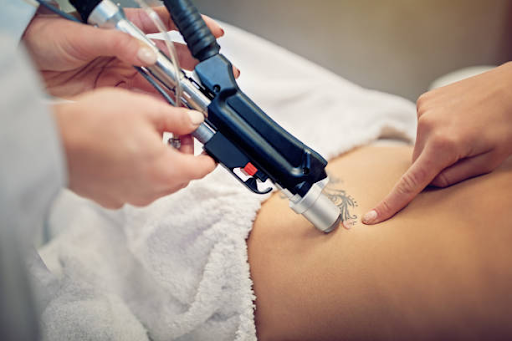Whether it’s a change in style, lifestyle, or simply a decision made in haste, many people consider tattoo removal to erase or lighten unwanted ink. Thanks to advancements in technology, there are now multiple effective options for removing tattoos, including tattoo removal Melbourne options that offer safe, professional services. Understanding the available methods and their effectiveness is key to choosing the right approach for your tattoo removal journey. Here’s a look at some of the top solutions and considerations.

Popular Tattoo Removal Methods
There are various methods for removing tattoos, each designed for specific needs and tattoo types. Laser treatments, dermabrasion, and saline tattoo removal are some of the most popular approaches, with each offering distinct benefits. The choice of method largely depends on factors such as tattoo size, ink color, skin type, and the desired outcome.
- Laser tattoo removal: The most common and effective method.
- Dermabrasion: Uses physical exfoliation to fade the ink.
- Saline tattoo removal: Involves saline injections to draw out ink.
Laser Tattoo Removal
Laser tattoo removal is widely recognized for its effectiveness in breaking down tattoo ink into small particles that the body can gradually eliminate. High-intensity laser beams target specific ink colors, making it possible to lighten or completely remove tattoos. Although the method is most effective on darker inks, modern technology allows lasers to treat a broader range of colors.
Factors Affecting Tattoo Removal Success
The effectiveness of tattoo removal depends on a few important factors, including the tattoo’s age, color, and the type of ink used. For instance, darker inks like black and blue are easier to remove, while lighter colors like green and yellow can be more resistant. Additionally, older tattoos are often easier to remove because the ink has naturally faded over time.
Skin Tone and Ink Colors
Skin tone and ink color play a significant role in determining how successful tattoo removal will be. Individuals with lighter skin tones generally experience better results, as the laser can more effectively target darker pigments. Consulting with a specialist can help set realistic expectations based on your skin type and tattoo characteristics.
Laser Tattoo Removal Process and Aftercare
The laser tattoo removal process requires multiple sessions, with each session targeting a specific layer of ink. Between sessions, proper aftercare is crucial to ensure that the skin heals effectively and that there is minimal risk of scarring. Typical aftercare instructions include avoiding sun exposure, keeping the area clean, and applying recommended ointments.
- Avoid sun exposure to prevent skin damage
- Keep the area clean to avoid infection
- Follow all aftercare instructions provided by the technician
Alternative Tattoo Removal Options
For those who prefer options other than laser removal, alternatives like dermabrasion and saline removal are available. Dermabrasion works by “”sanding”” down the tattooed area, gradually removing the ink along with layers of skin. Saline removal involves injecting a saline solution into the tattooed area to draw out the ink over time. Both methods are less commonly used but can be effective for certain types of tattoos.
| Method | Description | Best For |
|---|---|---|
| Laser Removal | Uses lasers to break down ink particles | Darker inks, especially black and blue |
| Dermabrasion | Removes skin layers to eliminate ink | Small tattoos and faded ink |
| Saline Removal | Injects saline to draw ink out | Specific ink colors and types |
Long-Term Care and Maintenance
After the tattoo removal process, taking care of your skin is crucial to ensure smooth and clear results. Avoiding exposure to harsh chemicals, refraining from direct sunlight, and moisturizing the area can help maintain skin health. For those considering further treatment, regular check-ups with a skin specialist can aid in assessing long-term care options.
Conclusion
Tattoo removal provides a range of options, from popular laser treatments to alternatives like dermabrasion and saline injections. Choosing the right method requires careful consideration of tattoo size, color, and individual skin type, so consulting with an experienced professional is essential. With realistic expectations and proper aftercare, tattoo removal can be a safe and effective journey toward achieving your desired results.
FAQ
- How many sessions does laser tattoo removal require? The number of sessions depends on factors like tattoo size, color, and ink depth, typically requiring between 5-10 sessions.
- Is tattoo removal painful? Tattoo removal involves some discomfort, though numbing options can help reduce pain during treatment.
- Can all tattoo colors be removed? Darker inks are generally easier to remove, while certain lighter colors, such as green and yellow, may require additional treatment.
- What aftercare is needed for tattoo removal? Aftercare typically includes avoiding sun exposure, keeping the area clean, and following the specialist’s guidance to promote healing and reduce scarring.